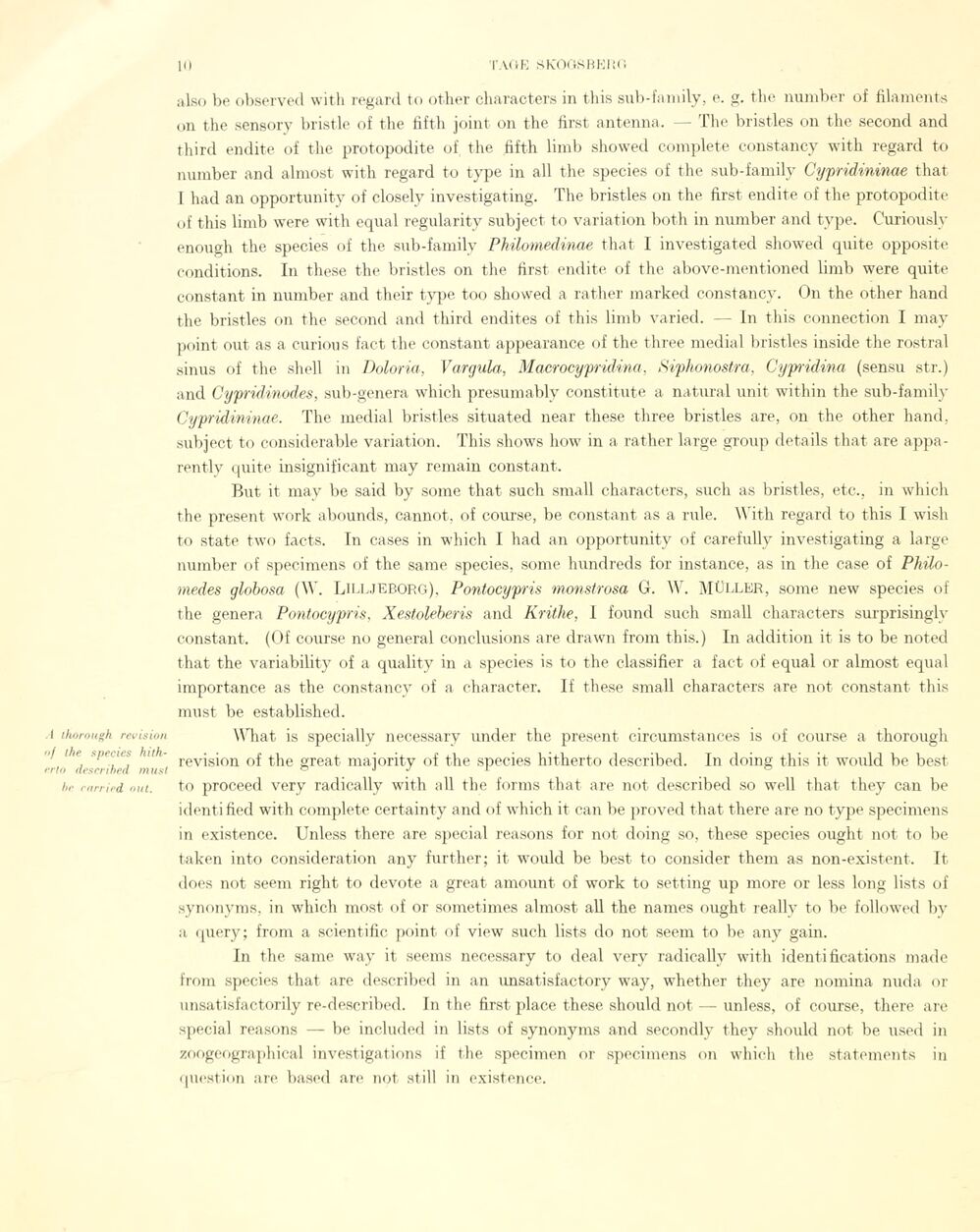
Full resolution (JPEG) - On this page / på denna sida - Sidor ...

<< prev. page << föreg. sida << >> nästa sida >> next page >>
Below is the raw OCR text
from the above scanned image.
Do you see an error? Proofread the page now!
Här nedan syns maskintolkade texten från faksimilbilden ovan.
Ser du något fel? Korrekturläs sidan nu!
This page has never been proofread. / Denna sida har aldrig korrekturlästs.
A thorough révision
uf the species
hith-erto deseri betl m usl
lie enrrit’d ont.
also be observecl witli regard to other charaeters in this sub-family, e. g. the mimber of filaments
on the sensory bristle of the fifth joint on the first antenna. — The bristles on the second and
third endite of the protopodite of, the fifth limb showed complete constancy with regard to
number and almost with regard to type in all the species of the sub-family Cypridininae that
I had an opportunity of closely investigating. The bristles on the first endite of the protopodite
of this limb were with equal regularity subject to variation both in number and type. Curiously
enough the species of the sub-family Philomedinae that I investigated showed quite opposite
conditions. In these the bristles on the first endite of the above-mentioned limb were quite
constant in number and their type too showed a rather marked constancy. On the other hand
the bristles on the second and third endites of this limb varied. — In this connection I may
point out as a curious fact the constant appearance of the three medial bristles inside the rostral
sinus of the shell in Doloria, Vargula-, Macrocypridina, Siphonostra, Cypridina (sensu str.)
and Cypridinodes, sub-genera which presumably constitute a natural unit within the sub-family
Cypridininae. The medial bristles situated near these three bristles are, on the other hand,
subject to considérable variation. This shows how in a rather large group details that are
appa-rently quite insignificant may remain constant.
But it may be said by sorae that such small charaeters, such as bristles, etc., in which
the present work abounds, cannot, of course, be constant as a rule. W ith regard to this I wish
to state two facts. In cases in which I had an opportunity of carefully investigating a large
number of specimens of the same species, some hundreds for instance, as in the case of
Philo-medes globosa (W. LlLLJEBORG), Pontocypris monstrosa G. W. Müller, some new species of
the genera Pontocypris, Xestoleberis and Krithe, I found such small charaeters surprisingiv
constant. (Of course no general conclusions are drawn from this.) In addition it is to be noted
that the variability of a quality in a species is to the classifier a fact of equal or almost equal
importance as the constancy of a character. If these small charaeters are not constant this
must be established.
\Vhat is specially necessary under the present circumstances is of course a thorough
revision of the great majority of the species hitherto described. In doing this it would be best,
to proceed very radically with all the forms that are not described so well that they can be
identified with complete certain ty and of which it can be proved that there are no type specimens
in existence. Unless there are special reasons for not doing so, these species ought not to be
taken into considération any further; it would be best to consider them as non-existent. It
does not seem right to devote a great amount of work to setting up more or less long lists of
synonyms, in which most of or sometimes almost all the names ought really to be followed by
a query; from a scientific point of view such lists do not seem to be any gain.
In the same way it seems necessary to deal very radically with identifications made
from species that are described in an unsatisfactory way, whether they are nomina nuda or
unsatisfactorily re-described. In the first place these should not — unless, of course, there are
special reasons — be included in lists of synonyms and secondly they should not be used in
zoogeographical investigations if the specimen or specimens on which the statements in
question are based are not still in existence.
<< prev. page << föreg. sida << >> nästa sida >> next page >>